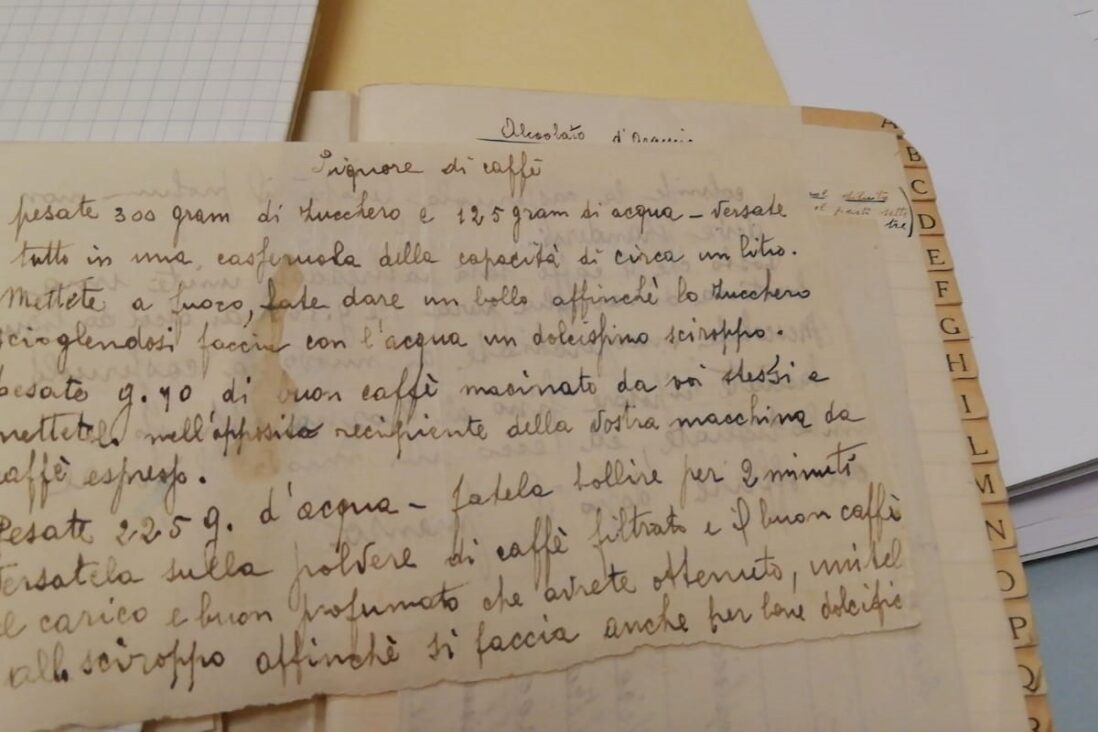Alcoholic recipes in the Archive

At Christmas, Carnival and Easter, there are many people who make and give homemade liqueurs, and one is always looking for inspiration for different recipes. Where better to look for inspiration than in the Archive?
The Archive has accustomed us to curiosities of all kinds, often related to the table and the menus that were served in the Company’s communities and colleges. Today it amazes us once again and offers us some recipes…alcoholic!
During the reorganisation of one of the folders concerning Bassano del Grappa, where the Jesuits had a community until a few decades ago, a very interesting and curious source was discovered.
It is the personal notebook of Brother Sartirana, so far nothing strange, in the archives we have thousands of personal files and in at least one out of five there are letters or notebooks of individual Jesuits.
A quick reference to the life of Brother Sartinara and his connection with Bassano will help us unravel the mystery of this notebook.
Brother Sartinara was dedicated to many activities as a good Jesuit brother, and had been involved since the 1960s in the production of the famous Amaro S. Giuseppe, famous in Bassano del Grappa and also in northern Italy, which is still produced today.
The brother was in charge of the preparation, he knew herbs, properties, blends, but his knowledge was not limited to this recipe alone but he knew many others, all diligently jotted down in his personal notebook.
This, after his death, was kept in the binder, together with the papers concerning Amaro, and today it restores all the skilful art of preparing liqueurs and infusions with which his brother was endowed.
In the notebook you can find recipes for once much-used liqueurs such as Vov or orange brandy, or the more traditional coffee liqueur whose recipe you can read in the photo, Seltz water, even a recipe for beer.
There are not only recipes for alcoholic beverages, there are also others such as one for insecticide, a paste for polishing shoes, a solution for softening rubber, soap for embalming skins, chalk for fake marble.
The notebook, in fact, reflects all the activities of the brother, not only engaged in the distillery with Amaro S. Giuseppe, but also dedicated to cooking and the most disparate activities in the home, in fact we find the recipe for making poisonous mushrooms harmless, softening rubber and many others indispensable for a recycling and sustainable economy.
There are no recipes for dishes, the only exception being one for pignoccate, a typical southern Italian dessert that had evidently caught the brother’s attention and that he may have proposed to his brothers in the community.
Finally, since the brothers were often also skilled nurses and able to find the right remedy for some small need in the community, we point out the preparations to reduce corns, to relieve sciatica, to promote diuresis.
We hope we have given you some suggestions with the… alcoholic recipes, try your hand at reproducing the Brother’s coffee bitter and let us know!
Maria Macchi











